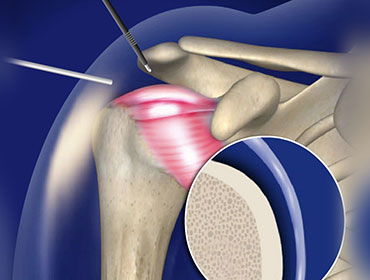Capsule Release
The operation seeks to shorten healing time by allowing the joint to move freely and relieve pain.
With a specific radio-frequency probe, the tight capsule of the joint is loosened during keyhole surgery.
Frozen Shoulder has traditionally been treated with a manipulation under anaesthesia (MUA). This entails twisting the shoulder while under a general anaesthesia to release it. For most people with uncomplicated frozen shoulders, it has been a successful procedure. An arthroscopic capsular release, on the other hand, is a capsular release performed with greater precision through keyhole surgery. The outcomes are positive in over 80% of patients, and the pain relief is faster than with MUA. Arthroscopic capsular release also enables the surgeon to use the arthroscope to inspect around the shoulder joint for any other diseases or injuries.
For those who have developed a resistive stiff (frozen) shoulder after injury, trauma, or fractures, as well as diabetics, capsular release is safer and more successful than MUA.
The thickened, bloated, inflammatory aberrant capsule is sliced and removed during Capsular Release.

